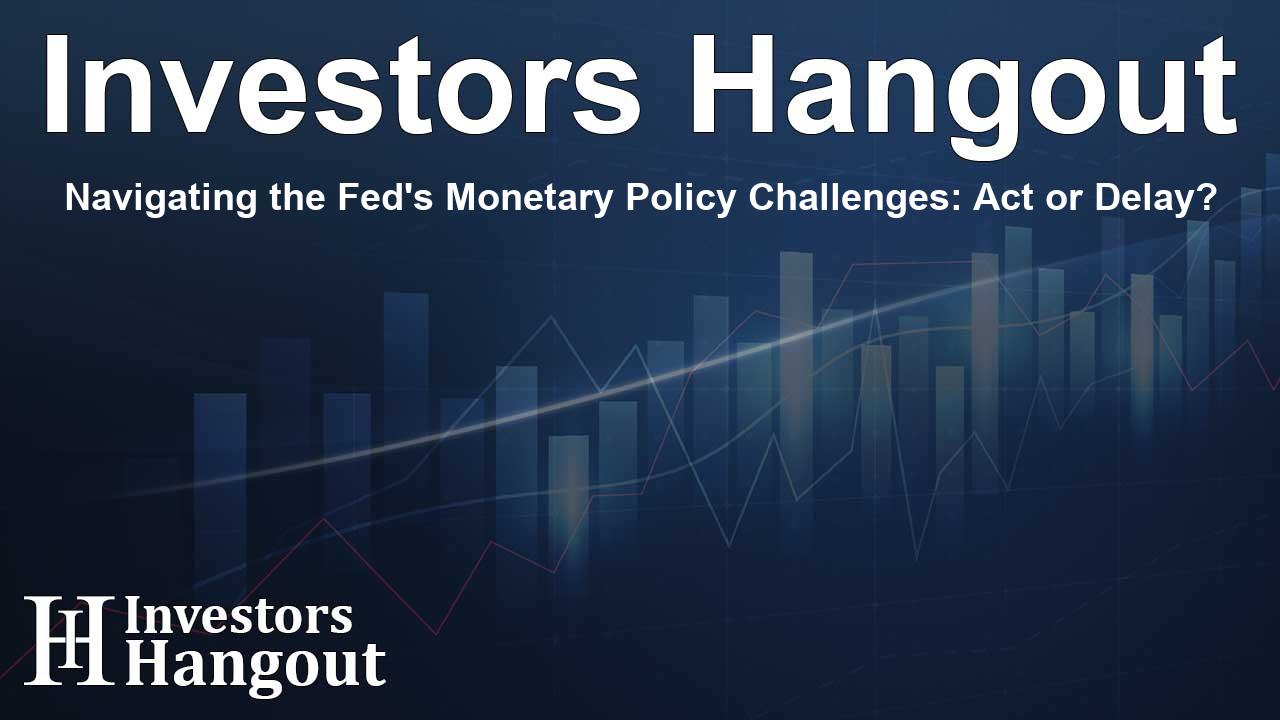Navigating the Fed's Monetary Policy Challenges: Act or Delay?

The Fed's Critical Crossroads
The Federal Reserve is currently facing a crucial decision point. Economic indicators present a mixed picture, while pressures from political figures escalate. Fed officials are engaged in an intense discussion regarding whether to lower interest rates now or wait for clearer signals. The choice made here could significantly influence the trajectory of the U.S. economy, and financial markets are closely monitoring this situation.
A Divided Federal Reserve
Gone are the days of a united Federal Reserve. Officials find themselves divided into distinct camps: some advocate for an immediate cut in rates, centrists plead for measured patience, and there are hawkish concerns regarding inflation that has not yet been fully tamed.
This fragmentation highlights the nuanced complexities of the current economic landscape. Earlier this year, there was a pause in rate cuts as officials assessed the potential inflationary impacts tied to tariffs. However, as these pressures have subsided, focus has shifted back to economic growth and the adverse effects of maintaining high rates for prolonged periods.
Mary Daly, President of the San Francisco Fed and a representative of the centrist faction, articulated the sentiment succinctly: “You can’t wait forever.” This indicates a desire for two additional months of economic data before making conclusive decisions, emphasizing the importance of the upcoming meeting.
The Political Context and the Data Battle
This issue extends beyond just economic theories and numbers. Political figures are amplifying their voices, with calls to action coming from high-ranking officials. For instance, the current administration vocally supports rate cuts and has even criticized the Fed's ongoing renovations. This political pressure undoubtedly complicates decision-making but may not overtly dictate the policies adopted.
Initial indicators suggest that inflation tied to tariffs is being smoothed out across various supply channels, rather than fully transferring to consumer prices. This situation offers the Fed some operational flexibility. However, there are lingering concerns that as customs enforcement becomes more stringent, price pressures could surge again.
Arguments for Immediate Action
Among the voices lobbying for immediate action is Fed Governor Christopher Waller, whose concerns are primarily structural, not political. He emphasizes that the unemployment rate may not reflect the underlying weaknesses in private sector hiring. “If you’re talking about September, what are you waiting for? Do it now,” Waller implores.
Additionally, former Dallas Fed President Robert Kaplan has drawn a metaphorical parallel between the Fed and a massive supertanker, warning that delaying policy adjustments could lead the economy toward potential troubles. While he advocates for careful consideration, he also underscores the necessity of preparing for action.
Inflation: The Wild Card
On the other side of the spectrum, hawks like Atlanta Fed President Raphael Bostic express skepticism. Their apprehensions stem from the notion that temporary inflation spikes due to tariffs could reshape long-term inflation expectations. The memories of the inflation surges in 2021 and 2022 still linger, resulting in caution against repeating bygone mistakes.
Ultimately, the decision confronted by the Fed may depend less on immediate inflation rates or job statistics, and more on how they manage public and market expectations. As noted by William English, a former senior advisor to the Fed, the significant effects of these decisions may be political and psychological rather than strictly economic.
Implications for Markets
For investors, uncertainty prevails. While stock markets hover near record levels, betting on future cuts, persistent long-term yields suggest that markets are bracing for possible policy errors. If a rate cut occurs in September, it could invigorate a bullish trend—provided it is perceived as a decisive move rather than a hasty reaction.
Conclusion: Time is of the Essence
Whether the Fed opts to lower rates this week, next month, or later this fall, the overarching theme remains centered on effective risk management. A premature cut could reignite inflation, while an overly cautious approach might unnecessarily weaken the labor market.
The Powell-led Fed is navigating through turbulent economic waters, trying to harmonize caution with assertiveness. As the September meeting draws near, all eyes will be on how this “supertanker” maneuvers—if it decides to pivot, the timing of that turn will be critical.
Frequently Asked Questions
What factors are influencing the Fed's decision on interest rates?
The Fed's choice is influenced by mixed economic data, political pressures, inflation concerns, and the employment situation.
How is the internal division within the Fed impacting policy decisions?
The divided stance among Fed officials complicates consensus and reflects differing opinions on addressing inflation and economic growth.
What are the potential consequences of a rate cut?
A rate cut could stimulate economic growth, but it may also risk reigniting inflation if done too soon.
How do political pressures affect the Fed's independence?
Political pressures can create significant challenges, influencing public perception but ideally should not dictate monetary policy directly.
Why is investor sentiment important for the Fed?
Investor confidence can signal reactions to Fed policies, influencing market stability, growth expectations, and overall economic health.
About The Author
Contact Logan Wright privately here. Or send an email with ATTN: Logan Wright as the subject to contact@investorshangout.com.
About Investors Hangout
Investors Hangout is a leading online stock forum for financial discussion and learning, offering a wide range of free tools and resources. It draws in traders of all levels, who exchange market knowledge, investigate trading tactics, and keep an eye on industry developments in real time. Featuring financial articles, stock message boards, quotes, charts, company profiles, and live news updates. Through cooperative learning and a wealth of informational resources, it helps users from novices creating their first portfolios to experts honing their techniques. Join Investors Hangout today: https://investorshangout.com/
The content of this article is based on factual, publicly available information and does not represent legal, financial, or investment advice. Investors Hangout does not offer financial advice, and the author is not a licensed financial advisor. Consult a qualified advisor before making any financial or investment decisions based on this article. This article should not be considered advice to purchase, sell, or hold any securities or other investments. If any of the material provided here is inaccurate, please contact us for corrections.
